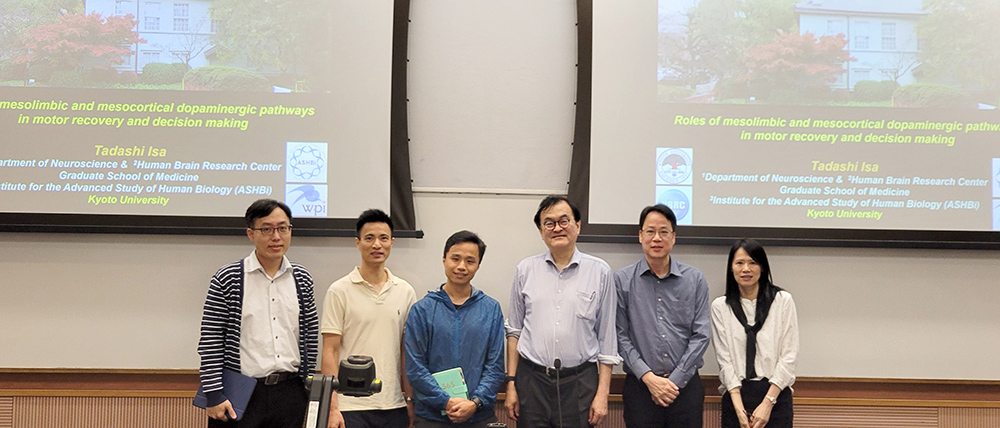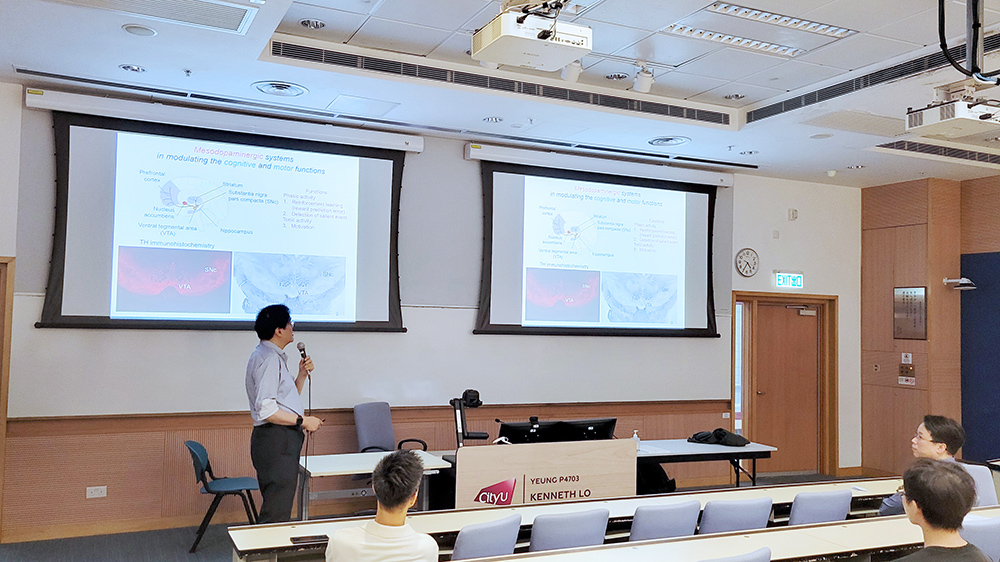

On 14th June we invited Prof. Tadashi Isa, Dean of the Graduate School of Medicine and Professor of Neuroscience, Kyoto University, to deliver a lecture on “Roles of Mesolimbic and Mesocortical Dopaminergic Pathways in Motor Recovery and Decision Making”. In this lecture, Prof. Isa succinctly summarized his three major works related to the roles of dopaminergic innervations originating from the midbrain to the cortex and limbic area in motor recovery and decision-making in monkeys.
Dopaminergic neurons in the ventral tegmental area (VTA) project to the striatum including the nucleus accumbens (NAc) and many cortical areas and is considered to regulate motivation and a variety of cognitive functions. Prof. Isa first described the finding from his group that NAc plays a critical role on the motor recovery after the spinal cord injuries (SCI). NAc is considered not to be involved directly in the control of movements, but after the SCI it starts to activate the motor cortices and gets involved in the direct control of hand movements through activation of the motor cortex. He also reported that selective blockade of the pathway from VTA to NAc impaired effort-based decision for the monkeys to get larger amount of reward by waiting long for its delivery, rather than the reward-based reinforcement learning.
Prof. Isa then went on to describe his more recent finding that the mesocortical pathway from VTA to the lateral-ventral portion of the Brodmann area 6 (area 6V) is involved in the control of decision-making involving risk-based decision making which might require higher level of computation. His group demonstrated that selective optogenetic activation of the VTA to the ventral portion of area 6V (area 6VV) enhanced high risk-high return (HH) preference, while stimulation of the VTA to the dorsal aspect of area 6V (area 6VD) reduced the HH preference. Moreover, repeated stimulation of the VTA-6VV and VTA-area 6VD chronically enhanced and reduced the HH preference, respectively. These results are highly interesting and important in that they may reveal the neuronal mechanisms underlying addiction such as gambling disorders.
Prof. Isa’s talk was enthusiastically received by the audience including a rich discussion following the seminar.
